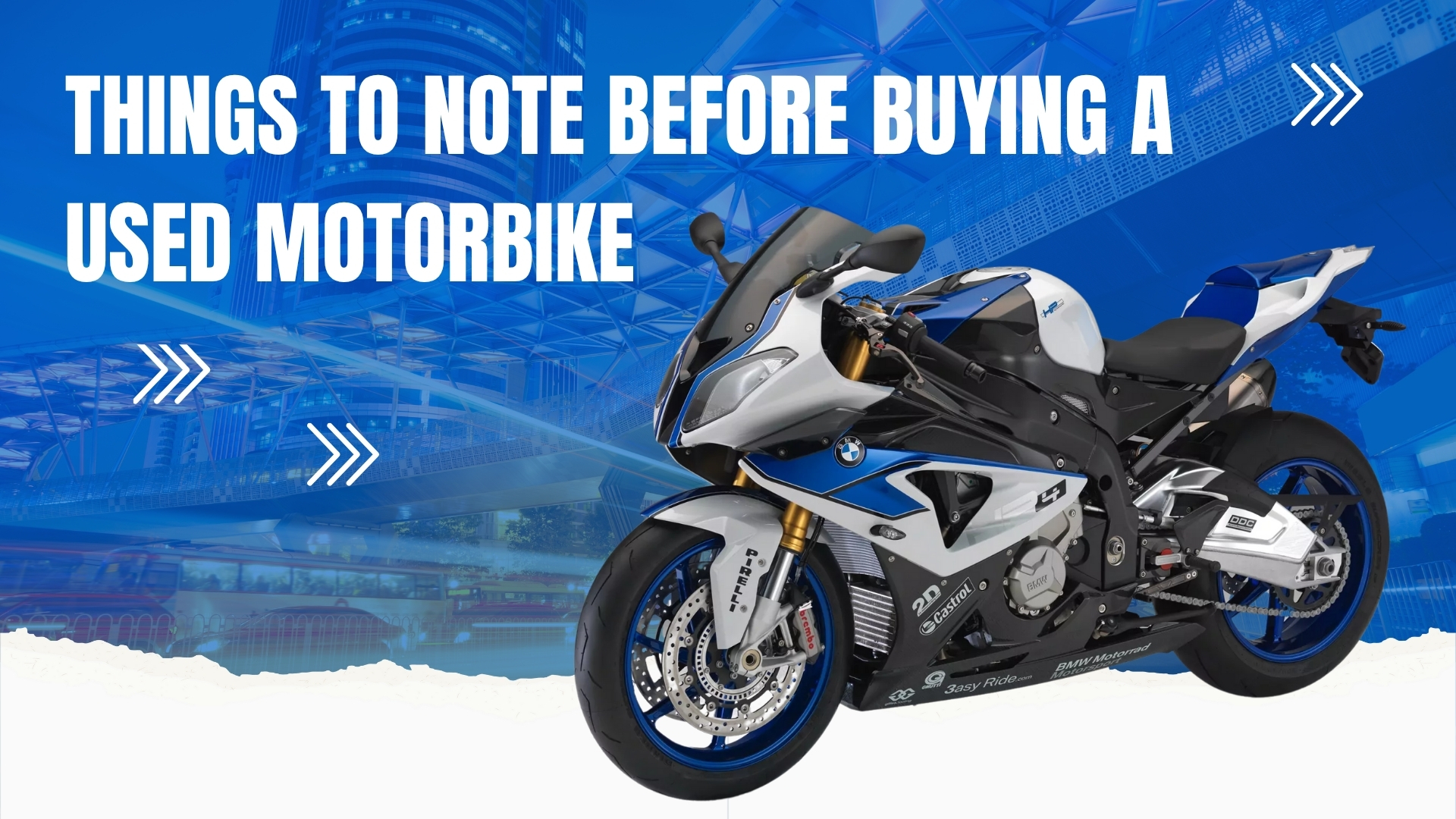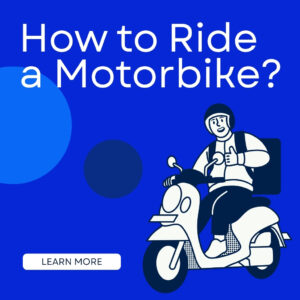Buying a used motorbike can be an exciting and cost-effective way to hit the road, whether you’re a first-time rider or a seasoned enthusiast looking for your next adventure. However, the process is not without its pitfalls. Unlike purchasing a brand-new motorcycle, a pre-owned bike comes with its own set of challenges and considerations. From hidden mechanical issues to paperwork pitfalls, there are several things to note before buying a used motorbike.
This comprehensive guide will walk you through everything you need to know before making your purchase. We’ll cover the key factors to consider, how to inspect a used bike, what documents you need, and how to avoid common mistakes. Whether you’re eyeing a sleek sportbike, a rugged adventure machine, or a classic cruiser, these tips will help you make a confident and informed decision.
What to Look for When Buying a Used Motorbike

1. Set Your Budget and Research the Market
Before you even start browsing listings, it’s crucial to set a realistic budget. Consider not just the purchase price but also additional costs such as insurance, registration, maintenance, and potential repairs. Research the market value of the models you’re interested in using resources like Kelley Blue Book, NADA Guides, or local classifieds.
Key Points:
- Factor in ongoing costs (insurance, maintenance, gear)
- Compare prices for similar models and years
- Be wary of deals that seem “too good to be true”
2. Decide on the Right Type of Bike
Motorbikes come in various styles, each suited to different needs and riding experiences. Are you looking for a commuter bike, a touring machine, an off-road adventure, or a weekend cruiser? Make sure the bike you choose fits your intended use and skill level.
Common Types:
- Sportbikes: Fast, agile, best for experienced riders
- Cruisers: Comfortable, stylish, great for relaxed rides
- Adventure/Touring: Built for long distances and varied terrain
- Standard/Naked: Versatile, good for beginners
- Dual-Sport: Suitable for both on and off-road
3. Where to Buy: Private Seller vs. Dealership
Each option has its pros and cons:
| Aspect | Private Seller | Dealership |
|---|---|---|
| Price | Often lower | Usually higher |
| Negotiation | More flexible | Less flexible |
| Warranty | None (usually) | May offer limited warranty |
| Inspection | Buyer’s responsibility | May offer pre-inspected bikes |
| Paperwork | Buyer handles | Dealer assists |
4. Inspect the Bike Thoroughly
A physical inspection is one of the most important things to note before buying a used motorbike. If you’re not confident, consider bringing along a knowledgeable friend or a mechanic.
Checklist for Inspecting a Used Motorbike:
- Frame: Check for cracks, rust, or signs of accident repairs.
- Engine: Look for oil leaks, excessive dirt, or strange noises.
- Suspension: Bounce the bike to check for smooth movement and leaks.
- Brakes: Inspect pads, discs, and test for responsiveness.
- Tires: Examine tread depth, cracks, and uneven wear.
- Chain & Sprockets: Should not be excessively worn or rusty.
- Electrics: Test lights, indicators, horn, and starter.
- Odometer: Compare mileage with the bike’s age and condition.
- Exhaust: Check for rust, holes, or loud/unusual sounds.
Test Ride Tips:
- Start the bike from cold to check for starting issues.
- Listen for unusual noises during idle and acceleration.
- Test all gears, brakes, and clutch for smooth operation.
- Observe handling and suspension feel.
5. Check the Bike’s History
A bike’s past can reveal a lot about its future reliability. Ask for service records, accident history, and previous ownership details.
Key Documents:
- Title/Registration: Ensure the seller is the legal owner.
- Service Records: Regular maintenance is a good sign.
- VIN (Vehicle Identification Number): Check for tampering and run a history report if possible.
- No Outstanding Loans: Ensure the bike is not under finance.
6. Verify Legal and Paperwork Requirements
Paperwork is often overlooked but is one of the most important things to note before buying a used motorbike. Make sure all documents are in order to avoid legal headaches.
Essential Documents:
- Original title and registration
- Bill of sale
- Valid insurance (if required for test rides)
- Emissions certificate (if applicable)
- Transfer of ownership forms
7. Assess the True Cost of Ownership
Beyond the purchase price, consider ongoing expenses:
- Insurance premiums (can vary by model and rider profile)
- Maintenance and repairs (older or rare bikes may cost more)
- Spare parts availability
- Fuel efficiency
8. Negotiate the Price
Armed with your research and inspection findings, negotiate confidently. Point out any flaws or upcoming maintenance needs to justify a lower price.
Negotiation Tips:
- Be polite but firm
- Don’t rush; be willing to walk away
- Have a maximum price in mind
9. Avoid Common Scams and Pitfalls
Unfortunately, the used motorbike market can attract unscrupulous sellers. Watch out for:
- Stolen bikes (check VIN and paperwork)
- Odometer tampering
- Fake or missing documents
- Pressure to pay in cash without a proper receipt
Comparison Table: Used vs. New Motorbike
| Feature | Used Motorbike | New Motorbike |
|---|---|---|
| Price | Lower, more affordable | Higher, premium cost |
| Depreciation | Slower, already depreciated | Rapid in first few years |
| Warranty | Rarely included | Manufacturer warranty |
| Customization | May come with aftermarket parts | Usually stock |
| Maintenance | May require more frequent repairs | Minimal initially |
| Choice | Wider variety of models/years | Latest models only |
FAQ: Things to Note Before Buying a Used Motorbike
Q1: What is the best mileage for a used motorbike?
A: There’s no “perfect” mileage, but generally, 20,000–30,000 miles for a well-maintained bike is reasonable. Condition and maintenance history are more important than mileage alone.
Q2: Should I buy from a private seller or a dealer?
A: Private sellers often offer better prices, but dealers may provide limited warranties and handle paperwork. Choose based on your comfort with risk and negotiation.
Q3: How can I check if a motorbike is stolen?
A: Always check the VIN against local police or national databases. Ensure the seller’s name matches the registration documents.
Q4: What are red flags when buying a used motorbike?
A: Signs of a crash, mismatched paint, missing paperwork, unwillingness to allow an inspection, or a price that’s too low are all warning signs.
Q5: Is it safe to buy a used motorbike online?
A: It can be, but always meet in person, inspect the bike, and verify documents before payment.
Additional Tips for First-Time Buyers
- Bring a Friend: Especially if you’re new to bikes, a second opinion is invaluable.
- Check Insurance Costs: Some models are expensive to insure, especially for new riders.
- Join Online Forums: Communities for your chosen model can provide insights and advice.
- Test Ride Multiple Bikes: Don’t settle for the first bike you see—compare options.
Conclusion: Make a Smart, Informed Purchase
Buying a used motorbike is a fantastic way to enjoy the freedom of two wheels without breaking the bank. However, it’s essential to approach the process with diligence and awareness. By keeping in mind the things to note before buying a used motorbike—such as thorough inspections, verifying paperwork, understanding the true cost of ownership, and being vigilant against scams—you’ll greatly increase your chances of finding a reliable and enjoyable ride.
